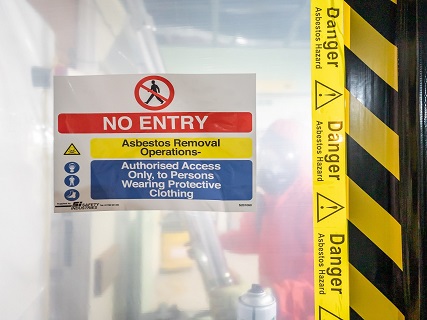Asbestos removal
Asbestos removal services
The market knowledge and understanding of the scale of historical asbestos use in buildings lags some way behind the reality. Many are surprised to learn that the roofs, ceilings and walls of structures built even as recently as the late 1990s may well contain Asbestos Containing Materials (ACMs). Commonly used for its insulation and fire resistant qualities since the Victorian era, the microscopic fibres in asbestos can inflict serious scarring of the lungs, leading to progressive shortness of breath which can, in severe cases,
be fatal. The simple act of inhalation can cause pleural thickening, asbestosis, mesothelioma and lung cancer.
Governed in the UK by strict regulations under the jurisdiction of the Health and Safety Executive (HSE), the work of asbestos removal requires highly specialised handling by licensed businesses. When asbestos can be safely removed, non-asbestos alternatives should be recommended.
Working with ACMs
Asbestos removal
ACMs commonly found in commercial and residential buildings of all sectors and sizes include asbestos coatings, asbestos lagging and asbestos insulation. As one of London’s leading asbestos removal companies, Decontaminate provide asbestos management survey services, followed up by specialist asbestos disposal. The safety of our personnel — and all who use the building once our work is complete — is our absolute priority. To maintain our outstanding safety record, all of our staff are protected by the highest standards of PPE and fully supported by continuous training, monitoring and assessment to assure complete compliance with all legislation and best practices.
It is estimated that as many as 1.5 million structures in the UK may still contain asbestos. As a building owner, operator or manager, it is your responsibility to ensure the safety of all who use your building. Our asbestos testing and asbestos surveys can identify and pinpoint its presence, enabling us to draw up an asbestos management plan and, wherever possible, carry out its safe, effective removal.
Asbestos encapsulation
Under certain circumstances, including the requirement to safely maintain its insulation or fire resistant qualities, asbestos management surveys might establish that the asbestos removal may not be necessary, subject to appropriate risk assessments. In such cases, asbestos encapsulation may be advised instead.
Subject to application and location, recommended encapsulation materials may vary, from a sprayed or painted coating, a cloth or fabric wrap, or a rigid board or sheet. The appropriate encapsulation material is then either applied directly to the ACMs, or to an independent supporting framework. As applications of asbestos vary greatly from one building to another, our team is well versed in multiple solutions, from encapsulating insulated pipes to various sprayed, painted and boarded materials.
Where it’s deemed safe and appropriate, encapsulation is a minimally disruptive process, as it can be installed while the building remains occupied, allowing business to operate as usual. Avoiding the potentially dangerous process of asbestos removal and disposal, it’s also usually a more cost-effective solution.
Asbestos removal on brownfield sites
Hazardous waste and ACMs can often be found on brownfield sites where previous structures have been demolished. In cases where historical demolition and construction works have taken place before today’s strict safety protocols were in place, hazardous waste can be strewn across entire sites, often buried in the soil, leaving entire sites contaminated.
ACMs on such sites take one of two forms. Licensed ACMs include asbestos insulating boards and asbestos sprayed insulation, whilst non-licensed materials include asbestos floor tiles and asbestos cement.
Covering all areas where subsequent excavation and groundworks are due to take place, the first stage of our work would be an asbestos land survey. Designed to establish the nature, likely distribution and quantities of ACMs, these surveys also entail the excavation of trial pits to the depths required on the site in question.
With the detailed findings of the asbestos land survey to hand, an asbestos management plan can be drawn up. This comprehensive plan sets out measures for dealing with the contaminated land, including the safe removal of ACMs and working practices required to safeguard site personnel, as well as provisions for ongoing testing, control measures and detailed reporting requirements.

